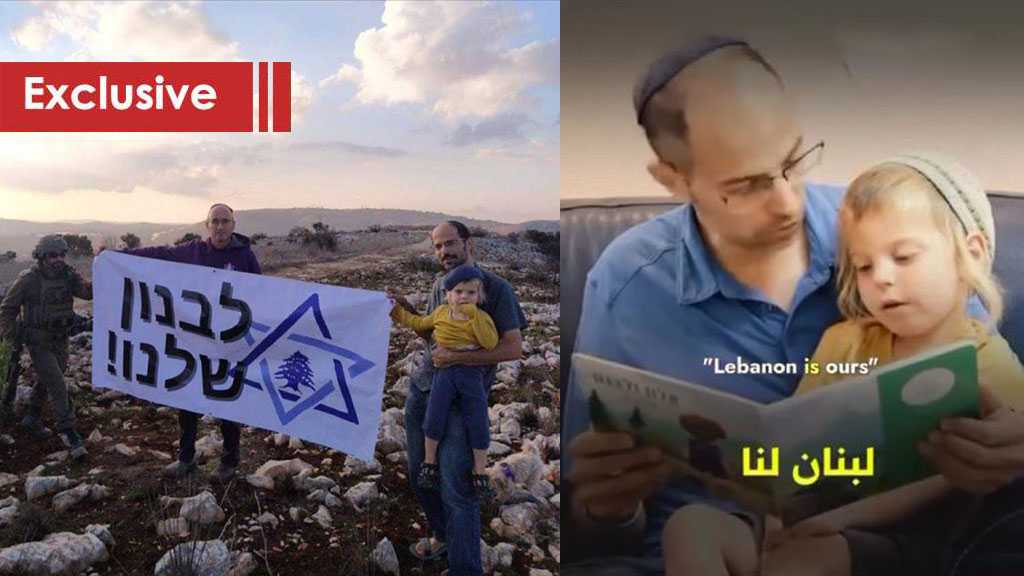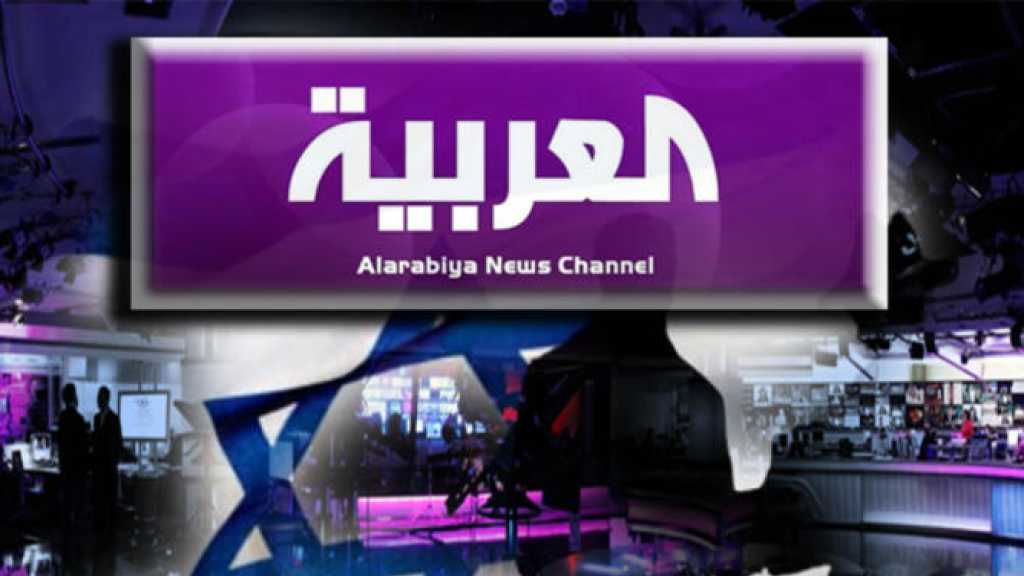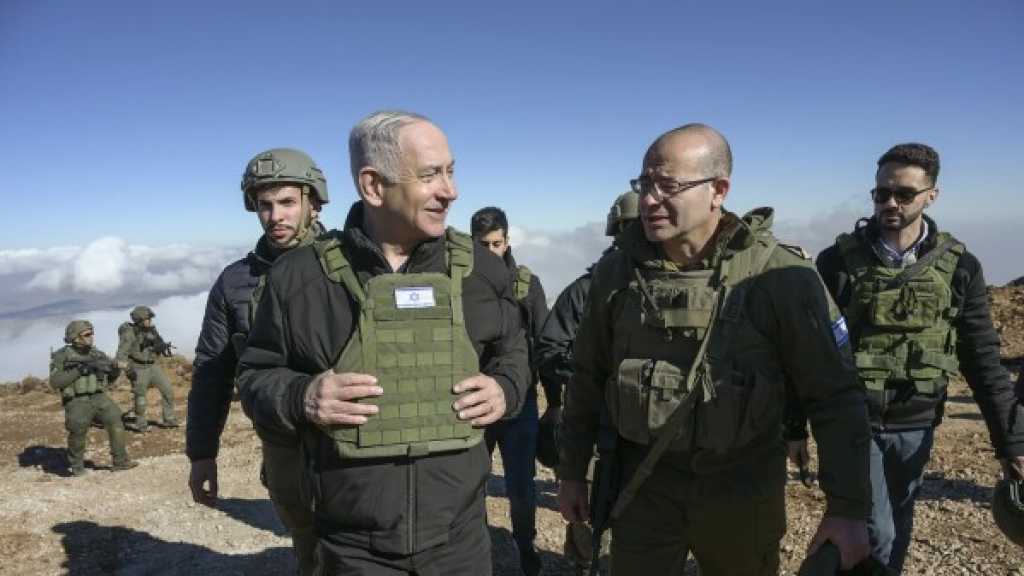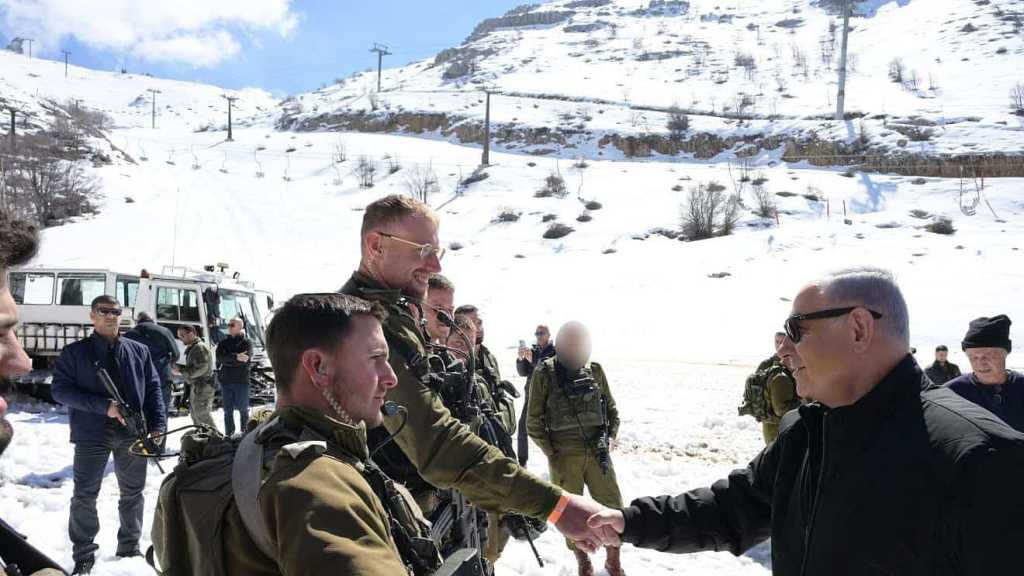
Hezbollah’s Anti-Tank Weapons: The Arsenal and Experience from Cannons to Diamonds [Almas]
![Hezbollah’s Anti-Tank Weapons: The Arsenal and Experience from Cannons to Diamonds [Almas]](https://english.alahednews.com.lb/uploaded2/images/20240527123345.jpg)
By Maysaa Mokadem
Lebanon - It started out with a few launchers and cannons and evolved into an arsenal including Almas with distinctive characteristics. That’s how the Islamic Resistance in Lebanon and its anti-tank weapons transformed from the “Prepare Against Them What You Can” stage in 1982 to the “Deter Allah’s Enemies And Your Enemies” in 2024.
For the first time, Al-Ahed News walks down memory lane with Hajj Hussein who takes us back the early days of Hezbollah’s founding. Hajj Hussein, an officer specializing in anti-tank weapons in the Islamic Resistance, has been keeping pace with elite weapons and their evolution through the stages of confrontation with the Zionist enemy, all the way up to the Al-Aqsa Flood Operation. He has insider knowledge of the new weapons the Islamic Resistance is using in this battle.
According to Hajj Hussein, the anti-tank weapons’ specialization in the Islamic Resistance can be divided into three stages, from the “Israeli” invasion of Lebanon in 1982 until the liberation in 2000.
![Hezbollah’s Anti-Tank Weapons: The Arsenal and Experience from Cannons to Diamonds [Almas]](https://english.alahednews.com.lb/uploaded2/2021/images/17.jpg)
* The first phase [1982 – 1992]: Before 1992, the anti-tank weapons’ specialization was limited to B7 projectiles, a few B9 launchers, and a 106 cannon. The capabilities of the resistance after the “Israeli” invasion were limited to these weapons. The lack in capabilities led to ineffectiveness against the enemy's Armored Corps, which are considered the mainstay of the “Israeli” army (more than 70% of the army is armored). They bragged about their superiority. This was the situation until 1992.
* The second phase [1992 – 1995]: The resistance decided to employ a new anti-tank weapon against the “Israeli” Armored Corps. It was in 1992. A group of resistance fighters headed to the Islamic Republic of Iran, the resistance’s greatest supporter, and underwent a guided weapons course: the Malyutka, TOW, and Fagot.
Despite undergoing a course on these weapons, the only one available in the hands of the Mujahideen in Lebanon was the Malyutka, in limited quantities. Only five launching platforms were distributed across the entire front. The first attack with this guided weapon was carried out on hill 910 in the Western Bekaa, where a tank was hit and destroyed, and its crew were neutralized.
This development created a new equation with the “Israeli” enemy. When the “Israelis” realized that guided weapons, including the Malyutka, were being used by the resistance forces, they took various measures, the first of which was to return their tanks to the rear.
* The third phase [1995 – 2000]: In 1995, the Islamic Resistance was able to obtain a second-generation weapon known as the Fagot. The mujahideen were trained to use it. The first shot was fired in 1995 at the Bar'ashit site at night. This was a qualitative shock to the "Israeli" psyche. The enemy had shifted most of its movements to night after the intensity of attacks from the resistance fighters during the day with the Malyutka. To break this new procedure, the resistance fighters used the second-generation Fagot to target the Bara’shit site at night. A tank was destroyed.
This strike constituted a qualitative leap in the armament of the resistance. At the same time, it was a shock to the enemy, prompting a change from offense to defense. After the resistance had been using machine guns, rocket-propelled grenades, and mortars in its attacks, it moved to guided weapons, including the Fagot and Malyutka. This led to a remarkable success in operations and paralyzed the enemy’s ability to confront the resistance during attacks.
At the same time, the resistance was able to obtain another second-generation weapon, the TOW. It was considered at the time to be an advanced weapon. TOW is a second-generation point weapon characterized by very high accuracy. The resistance used it in targeting enemy machinery and pillboxes. During that period, Officer Hussein recalls a phrase journalist Ibrahim Al-Amin used to describe the resistance – the fisheye [lens]. At the time, the resistance targeted and destroyed “Israeli” army personnel holed up in small ditches, including the al-Izziyah pillbox, in which four soldiers were killed.
* The Kornet: The secret of the General and his soldiers
Hajj Hussein tells us about a real war of the minds before and after the 2000 liberation between the Islamic Resistance and the “Israeli” enemy. Following the humiliating defeat of the “Israeli” army in southern Lebanon, it was necessary to make a qualitative leap and sharply develop the anti-tank weapons’ specialization to face the next stage.
Work began on analyzing and developing the resistance’s capabilities to confront the enemy’s armor, especially the reactive armor “Israeli” tanks were equipped with. This armor is considered one of the most advanced passive response systems (protection system of armoured vehicles) in the world. The resistance had to obtain weapons to confront this threat, so God Almighty granted them success in 2002 in the form of the Kornet.
Here, Hajj Hussein offers a gesture of loyalty to Hajj Imad Mughniyeh.
“These capabilities would not have been available without the efforts of Hajj Radwan. We acquired the Kornet, the Metis, and the B29. However, the leadership made a decision to keep the three weapons secret. We took all measures to preserve their secrecy from 2002 until the July 2006 war. Even our military formations were not aware of their existence. This trend continued with very painstaking work and a wise decision that bore fruit in 2006 when the enemy entered the war against us based on a plan built on our weakness and on the assumption that our weapons had a range of 3 km. Hence, all the vanguards of the armored force that attacked our areas belonged to the fourth generation Merkava. Therefore, the enemy based its plan on assessments and information that our capabilities were weak, so the surprise came through the Kornet.
The sudden appearnce of tears in the eyes of the Islamic Resistance officer tells an emotional secret.
“After we obtained this weapon and agreed to keep it secret, the team working on the Kornet and the Metis pledged to regularly recite Ziyarat Ashura. After the Secretary-General His Eminence Sayyed Hassan Nasrallah was informed of this matter, he said that we will be victorious by reciting this prayer and not because of the weapon. In fact, all the initial crew who were trained in the secret weapon deligently recited Ziyarat Ashura on a daily basis. God Almighty bestowed upon us the July War. The Kornet surprise for the “Israelis” was like Imam Ali’s sword that broke the enemy’s back.”
The officer adds, “It is true that the weapon is highly effective, but it all goes back to the skill of the hand weilding it, especially those launching at a range of 5 and 5.5 km. These ranges require very high skill, and the enemy acknowledged that our fighters were highly skilled in selecting targets and hitting them over long distances.”
During the period extending from 2000 to 2006, Hezbollah was able, through the efforts of its Mujahideen and the brothers in the factories of the Islamic Republic of Iran, to develop weapons. They increased the ability of the Malyutka to penetrate and increased the multiplicity of its warheads. Hence, it became anti-personnel, anti-fortifications, and anti-tank. The Tandem is anti-repellent armor. The Fagot’s range was developed from 2 km to 4 km. The TOW’s range was developed from 3 to 3,750 km. Focus was placed on multiple warheads up to the fragmentation, in addition to acquiring the Konkurs, Metis, and B29.
![Hezbollah’s Anti-Tank Weapons: The Arsenal and Experience from Cannons to Diamonds [Almas]](https://english.alahednews.com.lb/uploaded2/2021/images/18.jpg)
* Almas
During the July 2006 war, “Israeli” soldiers left their weapons on the ground in one of the battles of Bint Jbeil and fled under the attacks of the resistance men. Among these weapons was the “Israel’s” Spike, which the resistance seized and evaluated.
After the initial evaluation, it became clear to the resistance that the first feature of this weapon was that it belonged to the third generation, while all of the resistance’s weapons at that time were first and second generation. Immediately, a decision was issued by the leadership of the resistance to transfer the weapon to the Islamic Republic in the same year. With the cooperation of the resistance’s anti-tank specialists with our brothers in Iran over the years, the first test of the Almas weapon was in 2015.
The officer enumerates the features of this weapon.
“It is third generation, equipped with a fiber optic reel that transmits the image from the missile during its flight to the shooter, and gives it two features. The first feature is the up-date system, which improves the accuracy of hitting the target during its arrival and before the missile reaches the target. The second feature was added by the Iranian brothers and it is called steer, i.e, moving from one target to another during the shooting process. This enables the shooter to adjust the target after in case another more important target was discovered after the missile was launched. A third important feature is the top attack or a diving attack. The world of guided missiles includes three types of confronting the target. The first type is direct attack, which follow a straight trajectory toward the target, like the Malyutka and Fagot. All weapons in the world are of this type. But in the 1990s, the Americans produced a new generation of pounce style called the top attack. The Almas is equipped with a distinctive diving attack feature. The missile is launched automatically and ascends to a specific altitude called the peak. From there, the shooter identifies his target. The missile descends toward its target from above and a very high 45 degree angle. Our main goal was this type to confront the Trophy.”
* Anti-tank weapons used by Hezbollah since the beginning of the Al-Aqsa Flood
Hezbollah intiated operations in support of Gaza on October 8, 2023. The southern front in Lebanon was opened by the Islamic Resistance with weapons the “Israelis” knew well. The resistace officer likes to call these weapons the RPG Family, including RPG, B9, B10, 106 cannon. There were the guided weapons that the “Israelis” also know, including the Maliyutka, Fagot, Konkur, TOW, Kornet, Metis. All these weapons were used during the Al-Aqsa Flood.
As for Almas, the resistance has used it since the third week of the Gaza war, but the enemy did not discover this and thought they were suicide drones. The “Israeli” blindness continued until the resistance announced the weapon in approximately the second month of the war.
Among the weapons that were also secretly used during the Flood was the Kornet with a range of 8 km and 10 km, before it was announced in the attack on the Air Control Unit base on Mount Meron on January 6, 2024.
The resistance also used Kornet in the Lebanese front, but with multiple barrels. According to Hajj Hussein, this was “one of our secrets to confront the Trophy, which is the same as the 5.5-inch Kornet but with multiple barrels.”
* Almas and its properties
Almas is a third-generation weapon. It is reveresed engineered in the Islamic Republic of Iran by the “Israeli” Spike messile. What are its characteristics and most important features?
The following has been updated:
- The steer system, i.e. moving from one target to another
- Range: The “Israeli” Spike reaches three ranges of 4, 8, and 25 km. The resistance’s Almas is capable of reaching ranges of 4, 7 and 12 km.
- It has multiple warheads. The “Israeli” Spike is an anti-tank missile only, while the Iranian Almas is anti-tank, anti-fortifications, and anti-personnel - fragmentation.
- It a fire-and-forget missile. The world’s third generation weapons are based on the shooter aiming at the target, where he fixes and shoots. The relationship between the shooter and the missile ends here. The missile automatically heads towards the target.
- Missile tracking feature: The missile can be followed until the moment it reaches the target.
* What about Almas’ camera?
The officer eleborates on some aspects of Almas’ camera.
“It is not only a camera. It is called a seeker system. The camera is part of the seeker system mounted on the front of the missile. The missile transmits the image of the target area during its flight via a fiber-optic reel it is supplied with, which provides electro-optical communication between the missile and the shooter. After launch, the camera transmits the image via fiber optics to the platform [there is a screen inside the platform on which the image coming from the missile is displayed]. From here, the role of the shooter begins. There is a plus sign (+) that the shooter moves towards the point he wants and follows it up until the last moment of the missile hitting the target, i.e., it can hit the smallest part inside a tank.”
The steer and and up-date system and the seeker system, according to the resistance officer, “gave the possibility of shooting at invisible targets. This is considered in the world of guided missiles a step towards the future and a very advanced step. This means that the enemy behind the hills or mountains, and without the ability to see them directly, despite the presence of information regarding their position in the area, can be targeted by directing the tripod in the general direction of the target. After launching the missile automatically, it bypasses the “Israeli” obstacle behind which the target is positioned. All the targets appear, and the missile can be directed towards them and achieve a very precise hit.”
Also, within the seeker system, there is a lock feature. That is, the missile is locked on the target by the shooter. Nothing will stop the missile from heading towards the specific target, no matter how the target maneuvers or escapes until it is hit and destroyed.
* What about the Tharallah system?
Hajj Hussein reveals to Al-Ahed that the Tharallah system is the product of the resistance’s innovations as part of the war of the minds with the enemy. To understand this system well, it is necessary to know how Trophy works. Trophy is a detection and killing tool in the so-called positive defense department.
Globally, it is bieng used as a radar. It detects the missile coming towards the tank from a distance of 20 to 30 meters. Through a regular radar system like all radar systems, the killing tool it is equipped with [a device mounted on a precise electronic apparatus, a precise electromechanical apparatus directing the device in a general direction] heads in a precise direction toward the tank and detonates on impact. In short, it is like an iron dome attached to a tank.
When the “Israelis” manufactured this system, serious work immediately began. The resistance benefited from its personal and scientific experiences, as well as from the brothers in the Islamic Republic and identified the weak points. One of the system’s weaknesses was its inability to confront more than one projectile at a time. So, the objective was simply to fire two projectiles. But implementing this idea took strenuous effort, especially from the electronic minds that helped in this field. In short, this is the Tharallah system.
* The Kornet between July 2006 and the Al-Aqsa Flood
During the July 2006 war, Hezbollah used 52 Kornet missiles against the “Israeli” enemy, but since the beginning of the Al-Aqsa Flood battle, Hezbollah has used more than 370 to date.
* The anti-tank weapon: The elite's ultimate weapon
Hajj Hussein speaks about his specialty like a poet taking to his muse.
“This weapon has precision in hitting. It kills soldiers in their pillbox and follows the “Israelis’” measures at all times,” he says. “The Secretary-General, His Eminence Sayyed Hassan Nasrallah, previously promised that the “Israeli” tanks would be destroyed from the screens. An anti-tank weapon achieved this, and we made the whole world watch the “Israeli” tanks burning and being destroyed from the screens.”
The officer confirms that “despite all the ‘Israeli’ measures to limit the effectiveness of our capabilities within the ceilings that were thrown, the anti-tank remained a follower and pursuer of the ‘Israelis’ and influential. It inflicted the heaviest losses on their forces. The equipment they deployed to detect and identify us almost terrified the world. Despite that, we worked and achieved what we achieved during the Al-Aqsa Flood.
* What do you have in store if the war lasts or expands?
The officer responds decisively.
“Of course, we will not reveal specific items, but what we can say in the context of “Prepare Against Them What You Can” stage is that it requires us to always work on developing our capabilities and working on full readiness for the next stage. This theory in the course of the anti-tank experience was present. The examples are alive and present. In short, “We will surprise them.”
Comments



